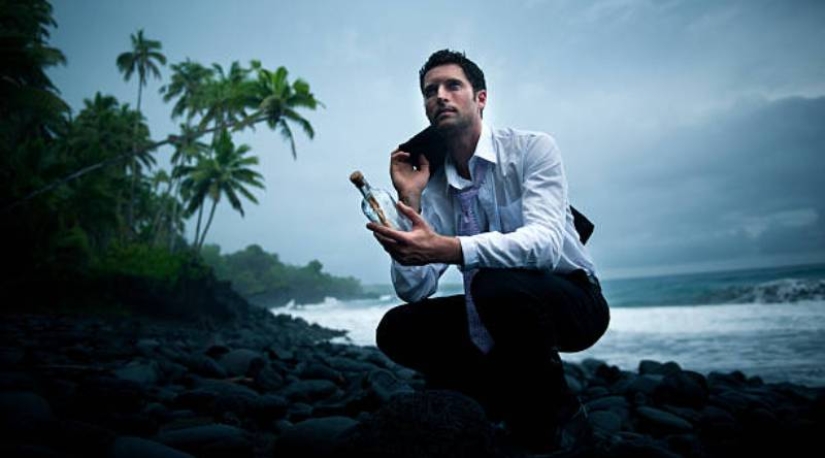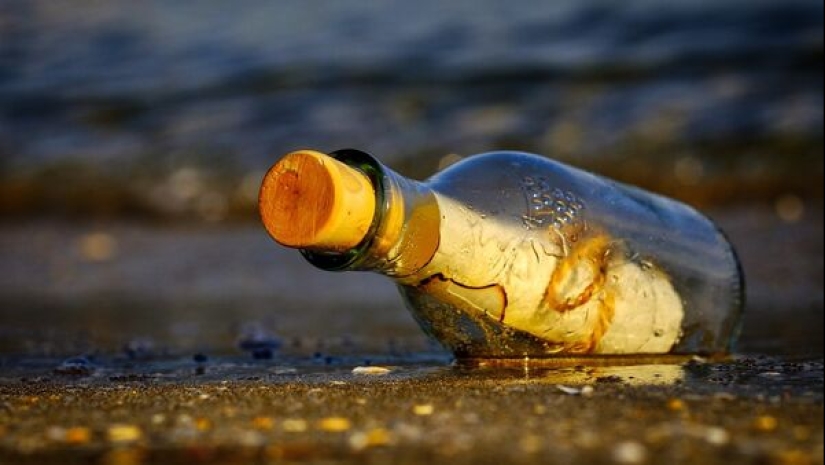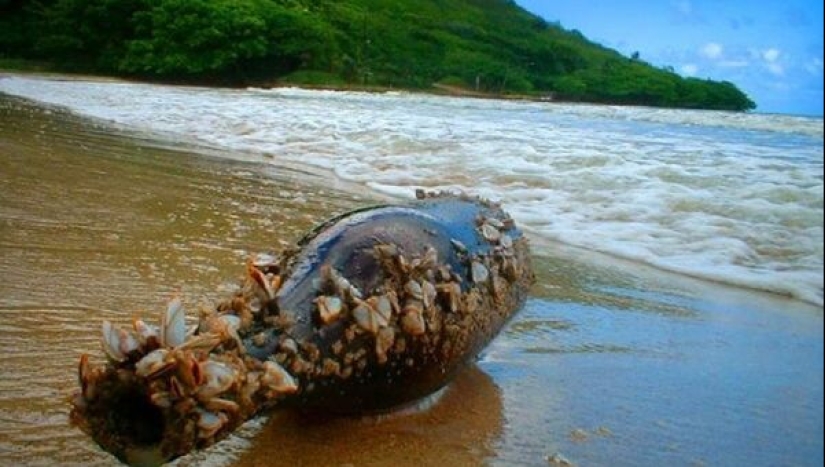Messages Lost in the Ocean: Who Sent Mail in Bottles and Why
Categories: History | Travel | World
By Pictolic https://pictolic.com/article/messages-lost-in-the-ocean-who-sent-mail-in-bottles-and-why.htmlA sealed letter is placed in a bottle and left to the mercy of the waves and wind - this image is often found in adventure novels. Sometimes such a message is found after a few days, and sometimes - after decades. And sometimes it happens that the letter can disappear without a trace. Nevertheless, people continued to use this method of communication, because in some situations there were simply no other options. Of course, bottle mail is reminiscent of the times of geographical discoveries and the era of colonization. However, its history began much earlier.

It is believed that the tradition of throwing bottles with messages into the sea was introduced by the Greek scientist and philosopher Theophrastus. However, he did this not to announce himself, but for the sake of scientific research. In 310 BC, Theophrastus conducted an experiment. He threw several bottles with notes into the Atlantic Ocean near the Strait of Gibraltar. Thanks to this, he was able to observe sea currents.

Theophrastus' experiment was a success: some of the bottles were found by fishermen on the coast of Sicily. Inside were pieces of parchment with the scientist's name and the purpose of the experiment. The bottles soon returned to their owner, bringing him important information about the movement of water masses in the Mediterranean Sea.
Sea currents were also used to transmit messages in other parts of the world, for example, in Japan. The ancient epic "The Tale of the House of Taira" tells of a poet exiled to a remote island. He wrote poems about his bitter fate on tablets and threw them into the sea. Thus, bottle mail or its analogues were used everywhere for centuries. Of course, this method was unreliable, but in the most difficult situations it remained available.
Over time, bottle mail became especially popular among sailors. Captains of ships of major maritime powers often used this method to send messages. For example, it is known that Christopher Columbus also used this method. When he was returning from a voyage to the New World, his ship was caught in a severe storm. Columbus was afraid that the vessel might not withstand the test.
Then he wrote about his discoveries on waxed parchment. The message also contained a request to deliver letters to the King and Queen of Spain. After that, the navigator sealed the note in a bottle and threw it overboard. However, this bottle was never found.

History knows of cases when letters in a bottle traveled on the waves for an incredibly long time. In 1784, Japanese captain Chunosuke Matsuyama and a crew of 43 people set sail for the Pacific Ocean islands. The sailors were attracted by the hope of finding new lands and getting rich. But suddenly their ship got into a strong storm and crashed on the rocks near an uninhabited island.
On the patch of land there were only stones and birds' nests. Hunger and thirst tormented the sailors, and the only chance to save themselves was bottle mail. Chunosuke Matsuyama wrote a desperate letter asking for help. In it, he indicated the approximate location where the ship ran aground. The waves brought the sealed bottle to the sailors' home village - but this happened only 151 years later. Unfortunately, Matsuyama's entire crew perished without ever receiving help.
Despite the unreliability of bottle mail, such dispatches were taken very seriously. In 1590, Queen Elizabeth I of England signed a special law. According to it, all bottles with letters found were to be delivered to the monarch's court. If someone uncorked a bottle without permission, they faced the death penalty. It did not matter how important the contents of the message were.

At the court of English kings there was a special position - the uncorker of sea bottles. It was entrusted to high-born aristocrats, because it was an extremely responsible job. Do not think that the position was considered a sinecure: the uncorker's workload was quite serious. In official documents, only for the first year there were as many as 52 bottles with messages.
The uncorker opened the bottle and tried to decipher the notes. Often they were written in other languages or damaged by water. After that, he went to report to the Queen personally. Elizabeth I, when an official came to her with another bottle letter, greeted him with a joke: "Well, what does Neptune write to us?"
Nowadays, with radio and the Internet, letters in bottles continue to be used. However, they rarely become a cry of despair and serve science, as in the times of the Greek Theophrastus. With the help of letters in hermetically sealed containers, oceanographers study sea and ocean currents. Inside the bottle or flask there is a note asking to send the find to a specific address with the exact coordinates of the place where it was found.

In the Russian Empire, 10,000 bottles with messages were used to study the Sea of Japan and the Sea of Okhotsk between 1907 and 1912. The oldest bottle with a message in our time was found on Australia's Moreton Island on June 6, 1983. It was thrown overboard from the steamship Arawatta in 1910.
It is impossible to say exactly how many letters in bottles are currently traveling the seas and oceans or lying on the shore awaiting their time. Most likely, there are thousands of them. Unfortunately, most of those who trusted this unreliable mail never received help. Nevertheless, the mysterious romance of sea messages has always attracted writers.

Edgar Allan Poe's first recognized work was the story "The Manuscript Found in a Bottle." Jules Verne's novel "The Children of Captain Grant" begins with the discovery of a similar message. In principle, there are many works that feature this method of transmitting information - they can be listed for a long time.
There are also many people who send letters in bottles to themselves - just for fun. They are curious to know how long it will take for the note to return to them and under what circumstances it will happen. To interest the finder, they sometimes even offer a reward for returning the message.
Mail in a bottle is not only a piece of history, but also a symbol of hope, romance, and scientific curiosity. If you had the opportunity to send a message in a bottle to the unknown, what would you write? And who would your message be for? Share your thoughts in the comments!
Recent articles

The late 1920s and early 1930s photographer Clifton R. Adams (Clifton R. Adams) spent in England, where he went on behalf of the ...

Why do we wear underwear? To take care of health, for hygienic purposes or playing along with fashion trends — one way or ...

Many nations have a tradition of stealing a bride. Nowadays, it is most often a symbolic ritual, the purpose of which is to ...